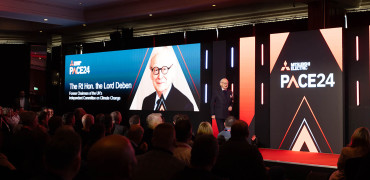Here’s a quick quiz for you.
How many of the following acronyms can you explain? And how many have slipped you by? (Note: I’ve only picked a few, otherwise we might be here all day!).
- BUS; EUI; GHG; CFE; PSDS; CO2e; NABERS; IPCC; GWP; ErP; ETS; CPPA;
- And what’s the difference between CCS and CCUS?
- Or between Grey Hydrogen and Blue Hydrogen and can Hydrogen really be Green?
- And just how are you meant to be able to distinguish between Part L, Part F, or Part O?
OK. If you’re involved in the construction industry that last one really should be easy to answer as it relates to the Building Regulations.
We’ll update the Jargon Buster every couple of months as new acronyms emerge
Another language
The construction sector is no different to any other industry, in that it uses its own acronyms and these become common language that can seem impenetrable to those outside the sector.
So, whilst Part L, Part F or Part O, is immediately recognisable to me, it probably makes little sense to others, unless you call it Part L of the Building Regulations (2021); Part F of the Building Regulations (2021); etc.
People can then quickly google this and find out that Part O regulates against overheating in buildings; Part L covers energy performance; and Part F affects indoor air quality.
However, what has happened over the past decade is that construction has become a central part of the climate change debate, and the way we build, operate and retrofit buildings is now central to whether the country (and the world) can achieve net zero.
Merging worlds
This means that the terms we use in construction now include terms that apply to or have been borrowed from other sectors.
For example, from the list I first quizzed you with at the top of this article, terms such as the following, have all come to construction from elsewhere:
EUI (Energy Use Intensity – from the Power sector); NABERS (an architectural certification scheme developed in Australia); GWP (Global Warming Potential – relating to refrigerants but originally used in the environmental sector).
And there are always new acronyms being added year-on-year, such as the Boiler Upgrade Scheme (BUS); the Public Sector Decarbonisation Scheme (PSDS – which is also known as ‘Salix’).
I could go on, but you get my point.
So where can you go for help?
That’s exactly why we have created a jargon busting guide.
We’ve put our ‘Sustainability Jargon Buster’ guide on our digital document library where it can be downloaded for free.
It’s worth bookmarking the site as it sits alongside other useful guides on avoiding buildings becoming stranded assets; whole life carbon and embodied carbon; Indoor Air Quality; Mould and damp prevention; and HVAC solutions for different sectors such as healthcare; education and offices.
Just clicking on the Jargon Buster will download it for you, so I’ll leave you to explore the actual differences between Carbon Capture and Storage (CCS) and Carbon Capture, Utilisation, and Storage (CCUS)!
A work in progress
I mentioned that new words are regularly added to our lexicon and in looking at previous articles for the bottom of this post, I’ve now realised that we need to add UKNZCBS.
This stands for the UK Net Zero Carbon Buildings Standard which is rapidly becoming THE definition of net zero in buildings and is supported by bodies such as CIBSE, RICS, UKGBC, LETI, RIBA, etc (Yet more acronyms!).
So, we plan to review the Jargon Buster every couple of months and update it.
In the meantime, if you do spot something that you really feel we need to include, look me up on LinkedIn or email Daniel.smith@meuk.mee.com.
Dan Smith is Sustainability and Construction Manager




